Canon AE-1 35mm Film Camera
Original price was: $360.00.$286.90Current price is: $286.90.
The Canon AE-1 is a 35mm film camera that gives photographers the opportunity to capture special moments. It features a shutter speed of 1/1000 second, along with an electronically controlled focal plane shutter. This makes it capable of capturing sharp images with perfect exposure and rich tones. The AE-1 also has a built-in light meter which reads ambient lighting levels and adjusts the f-stop setting accordingly to ensure optimal exposure. Additionally, its interchangeable lens system gives you options for wide angle, telephoto and macro shots, allowing you to customize your photos in any way you choose.
This camera offers photographers an endless array of creative possibilities, along with reliable performance. Its full manual controls give users full control over all exposure settings, while its sleek design ensures it will fit comfortably in your hand as you shoot. Because it uses 35mm film, the grain structure gives your photos a unique vintage look that digital cameras can’t replicate. Plus, its durable construction means it can stand up against harsh conditions or repeated use without missing a beat. Whether you’re looking to capture memories from an important event or just want to explore the world through photography, the Canon AE-1 is sure to make taking pictures an enjoyable experience every time.
The Canon AE-1 is considered to be a legendary film camera. It has a robust design that exudes a classic and elegant mechanical quality, making it appear to be exactly what it is. The name is one that is instantly recognizable to anybody who has ever considered the possibility of purchasing an older model. It is frequently mentioned on lists of the "Best Vintage Cameras." In 1976, Canon released their Canon AE-1 camera. Their most fruitful effort to date at developing a 35mm single-lens reflex camera.
Canon, Nikon, and Olympus were engaged in a fierce battle for market share. Regardless of this, the AE-1 was a huge commercial success. It was appealing to the general public. In addition, the camera is well-liked among film photographers in the modern era.
However, is it still worthwhile to purchase an AE-1 today? Is it possible to make use of it, and how do the results compare to those of more contemporary competitors? Or does its appeal stem from a sense of nostalgia combined with a trendy retro aesthetic? Let's dive in! 35mm Canon AE-1 Film Camera Outfitted with a 50mm f/1.8 Lens 35mm Canon AE-1 Film Camera Outfitted with a 50mm f/1.8 Lens Heavier than heavy, clumsier than clumsy, and gloriously analog. It is widely considered to be one of the best 35mm cameras ever made, and film photographers all over the world continue to find it useful and desirable. An introduction to the Canon AE-1 The Canon AE-1 has a very attractive design. However, despite what many people believe, physical appearance is not everything in life. A camera needs to be simple to operate, enjoyable to use, and produce unique and interesting results in order to be considered a worthy investment. The Canon AE-1 is successful in this endeavor for the most part.
The primary body of the Canon AE-1 camera is made up of both metal and plastic components, in contrast to older Canon cameras. This results in lower costs for both production and sales and also makes for a camera that is significantly less cumbersome. However, the durability of these models is significantly lower when compared to those made entirely of metal. Since the AE-1 went out of production in 1984, a good number of them are now more than 35 years old. Due to their advanced age, finding one that is in perfect operating condition may require some digging.
The "Canon Squeal" is a characteristic that can be found in older Canon cameras. It's a sound that certain plastic parts make when they aren't in the best condition, and it can be annoying. Even if it squeals occasionally, the camera will normally function without any problems. My AE-1 cost me 125 British Pounds to buy from a reputable dealer in Japan who was selling it on the internet. After doing some research beforehand, I came to the conclusion that this was a fair price for the model in question. It came with a 50mm lens and was in very good condition overall.
There is a wide variety of choice available online.
Some companies sell only the body, while others provide packages that also include lenses and other accessories. When buying something online, especially from another country, the single most important thing you can do is ensure that you are doing business with a reputable vendor. Also, be aware that in addition to the price of the camera, there may be import taxes that need to be paid. A picturesque lake in the wintertime, complete with swans Film: Fujicolo C200 Who in Their Right Mind Would Want a Canon AE-1? It is accurate to say that the Canon AE-1 does not enjoy the same level of popularity that it did back in 1976. It is now considered a camera for 35mm enthusiasts. for photographers who prefer the traditional, analogue method of photographing their subjects.
This camera is not one that I would recommend to people who are just starting out. The process of learning how to use a new camera properly can involve a lot of trial and error, which could end up being quite expensive. The cost might be enough to discourage some people. The AE-1 only has a few basic auto functions to choose from.
People who are eager to go out and take pictures right away might be dissuaded from doing so as a result of this, particularly considering the many contemporary alternatives. The fact that finding an AE-1 requires some searching may also dissuade novice users from purchasing one. But for those who are already dedicated to 35mm, the pursuit is a big part of the fun! This camera is ideal for an intermediate photographer who is passionate about shooting with 35mm film.
Its ease of use makes it an excellent choice for beginners who are just beginning their journey toward fully automated cameras. In addition, the AE-1 creates lovely images that can serve as a great source of motivation and inspiration. A couple can be seen relaxing on a concrete pier overlooking the ocean. Film: Fujicolor Superia X-tra 400 The Canon AE-1's Most Notable Characteristics Let's take a closer look at the Canon AE-1 and see what else it has to offer. Mounting Options and Device Compatibility The Canon AE-1 is equipped with a breech-lock FD lens mount, which means that it is compatible with all Canon FD lenses. Additionally, later New FD (FDn) lenses can be used with the camera. The AE-1 cannot use Canon's later EF lens mount because of compatibility issues. Because of this, the versatility of mixing and matching older Canon lenses with newer ones is reduced. Despite this, there are over 50 FD lenses that are compatible with the AE-1. These lenses range in focal length from 15 mm f/2.8 SSC to 300 mm f/5.6. There are also specialized lenses available, such as a circular fisheye lens with 7.5 millimeters of focal length and a tilt-shift lens with 35 millimeters of focal length.
In a manner comparable to that of the camera itself, lenses will need to be sought out. Even though it may be intimidating for novice photographers, experienced photographers will find that browsing through used cameras is a lot of fun. There are some treasures to be found in the world. The price of a lens can change depending on its type as well as its condition. When looking for used equipment, it is unlikely that you will come across a lens that is in pristine condition.
However, if you are patient enough, you will find that there are bargains available. Photograph taken during the golden hour of a girl descending stairs outside Image Quality: Fujicolor Superia X-Tra 400 Film The Canon AE-1's real strength is in its ability to produce high-quality images. The developed photographs will have a vivid appearance that is crisp and clear. Providing, of course, that everything goes according to plan. Your AE-1's state of repair plays a significant role in determining the outcome. For instance, a sluggish mirror lift is a problem that frequently arises. It's possible that it will let in too much light, which will result in the image being overexposed.
Alternately, it may result in a brief pause before the shot is taken. When compared to more contemporary cameras, the Canon AE-1 has a shutter speed range that is relatively restricted. There are thirteen settings available on the manual dial, ranging from 1/1000 of a second to 2 seconds. And the B stop when controlling the shutter manually. From 1.2 to 22, there are nine different F. stops available. On the interior of the viewfinder is a pointer that can be used to determine which necessary option should be selected. There is a semi-automatic function available on the lens of the AE-1 camera. It determines the appropriate aperture to use based on the levels of light that are present. The dial must be turned all the way to the 'A' option before the user can proceed. However, in order to get the most out of it, the photographer needs to choose the appropriate shutter speed. The viewfinder could use some improvement. When I want to take pictures with the right proportions, I have to get my face extremely close to the glass. It's possible that your nose will get in the way.
The sharpening of focus is a joy. When turning to focus, the roll action on all of the Canon lenses that I've used has been wonderfully smooth. The one major drawback is that the action moves rather slowly. However, this appears to be a characteristic of many older models of analogue cameras. The Canon AE-1 has a restricted range of capabilities. It's not the best equipment for action or shooting sports. In cases where the circumstances are likely to undergo frequent shifts, I would advise against doing so. In addition, the AE-1 lacks both video and burst shooting modes. You will need to have a solid understanding of how to work with the shutter speed and the F stop. You are going to be constrained by the ISO of the film that is currently loaded into the camera.
Although it might appear to be a lot of work at first, by the time you have finished your second roll of film, you will have the hang of it. Believe me when I say that the AE-1 one will be well worth it once you see the results. Fishermen at sea seated on a substantial block of concrete. Film: Fujicolor C200 Both the Body and the Handling When compared to many other vintage cameras, the AE-1 is noticeably more manageable due to its lower weight. This is possible thanks to its lightweight camera body, which is constructed out of both metal and plastic. But if we compare it to cameras of today, we can safely say that it is not a particularly lightweight option. It is not a ridiculously heavy item.
When it is finally around your neck, however, it won't be long before you start to feel it. If you shoot continuously throughout the day, you might end up feeling exhausted. The AE-1 is a very portable camera due to its compact design. Because it is more compact than many modern DSLR cameras, it does not take up a significant amount of room in your bag. It is a camera that is both convenient and of high quality. The AE-1 is completely operated by hand in every respect. When you first insert the film and again when the roll has been used up completely, you will need to wind it.
The dials for ISO and shutter speed are on the small side but are simple to operate. Additionally, the arm that cocks the film in preparation for the next shot has a satisfyingly mechanical feel to it. The battery life is the aspect of this camera that gives me the most cause for concern. To ensure proper operation, the AE-1 requires a 4LR44 battery. However, the battery compartment is quite small, making it difficult to replace the batteries. Although replacements can be found easily online, The camera, to its credit, draws very little power, and the addition of a button to test the battery is a welcome bonus. The Canon AE-1 is a camera that surprisingly feels good to hold in your hands. Although it has a straightforward and angular design, it sits comfortably in the palm of your hand.
There are other choices besides the Canon AE-1 for people who are interested in purchasing a traditional 35mm single-lens reflex camera. There are a few different cameras that fall under this category. During the 1970s and 1980s, the leading manufacturers of cameras competed with one another to develop the ideal camera for the mass market. The Pentax K1000 is likely the least complicated of the various alternatives. The fundamental operations can be carried out even when the battery is removed, and the only controls that can be modified are the shutter speed, aperture, and focus. This 35mm camera is perfect for those just starting out with the format.
The Olympus OM-1 and the Canon AE-1 are very comparable cameras. It is designed to appeal to a large number of consumers, it has a straightforward set of functions, and it generates high-quality images. Despite this, many people believe that it is not on par with the Canon. The Minolta X-700 represents a technological advance over its predecessor, the X-600. The shutter speed and aperture size can both be set to automatically adjust themselves.
This enables a greater degree of freedom and flexibility during shooting in conditions that are subject to change. At the time, the most cutting-edge model available was the Nikon FM2. In comparison to the AE-1's shutter speed of 1/1000 second, this one boasts a shutter speed that is four times faster: 1/4000th of a second. However, because of all the functions it offers, the Nikon is more difficult to operate. The FM2 is a camera designed for photographers who have prior experience using conventional single-lens reflex cameras. There is a wide range of possible prices for these vintage cameras. Condition and the location at which you find them can be two of the most important factors in determining price.
The majority of the time, online retailers that sell classics in pristine condition are aware of what they stock. This indicates that the price of the camera may be higher, but you can rest assured that it is of a high quality. The Olympus OM-1 is typically the most affordable model of the group. And there are a great many of them available. The Canon AE-1 and the Minolta X-700 are two cameras that fall into the price range known as the "middle bracket." The Nikon FM2 is the model that has the highest price tag and is the one that is the hardest to locate, even online. Canon AE-1, shown here against a black background Conclusion Is it fair to say that the AE-1 is the finest 35mm camera ever made?
The Canon AE-1 is not without its flaws. It's not only chunky and heavy, but it also takes some time to get used to. It does not come with many options or functions. It does not have the same level of versatility as modern cameras, so in order to get the best results, the conditions must be just right. The Canon AE-1 is not a camera that everyone should have. If, on the other hand, you are the type of person who enjoys immersing oneself in the world of 35mm photography, then you should absolutely go for it.
The Canon AE-1 is the ideal camera for you if you prefer to take photographs using a more hands-on and manual approach, or if you are transitioning away from digital photography. In the past forty years, there has been a significant advancement in camera technology. In terms of the capabilities it offers, the Canon AE-1 is simply unable to compete. Film photography, on the other hand, is not about the functions and features of high-tech equipment.
The relationship between the photographer and their camera is the focus of this discussion. And you'll only achieve the best results if you collaborate with one another. The Canon AE-1 is not without its flaws. This will not be anyone's first camera, as it is not designed for people who are just starting out in photography. On the other hand, it will acquaint you with the beauty of 35mm photography. If you ask me, the Canon AE-1 is the best classic 35mm camera that is still in production. Find a way to satisfy your passion for photography, and do it now!
Additional information
| Model | Canon AE-1 |
|---|---|
| Features | Auto Exposure |
| Brand | Canon |
| Item Weight | Typical |
| Focus Type | Manual |
| Item Length | Typical |
| Year Manufactured | 1980s |
| Color | Silver |
| Type | SLR |
| Country/Region of Manufacture | Taiwan |
| Format | 35 mm |
| Series | Compact |
| California Prop 65 Warning | n/a |
| Item Width | Typical |
| Item Height | Typical |
| Custom Bundle | No |
| Manufacturer Warranty | None |

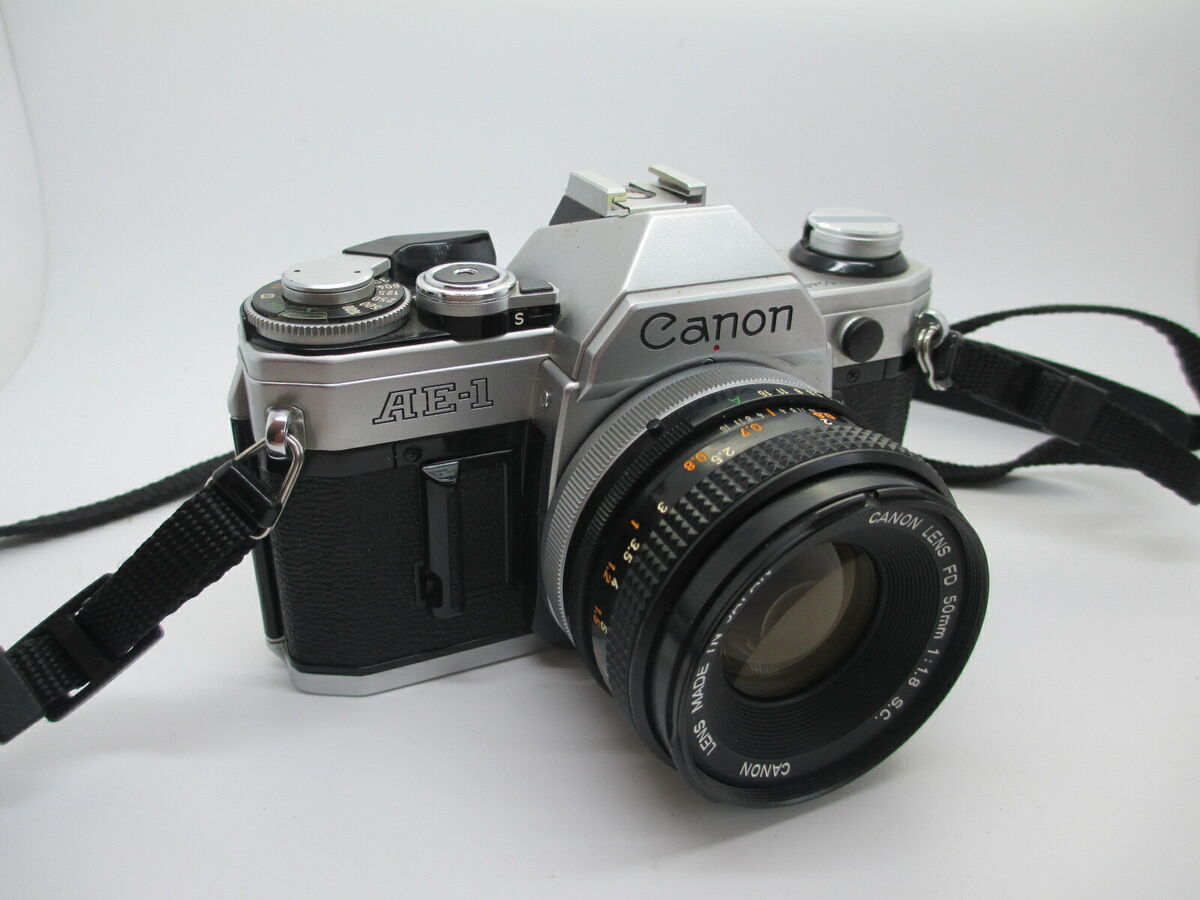
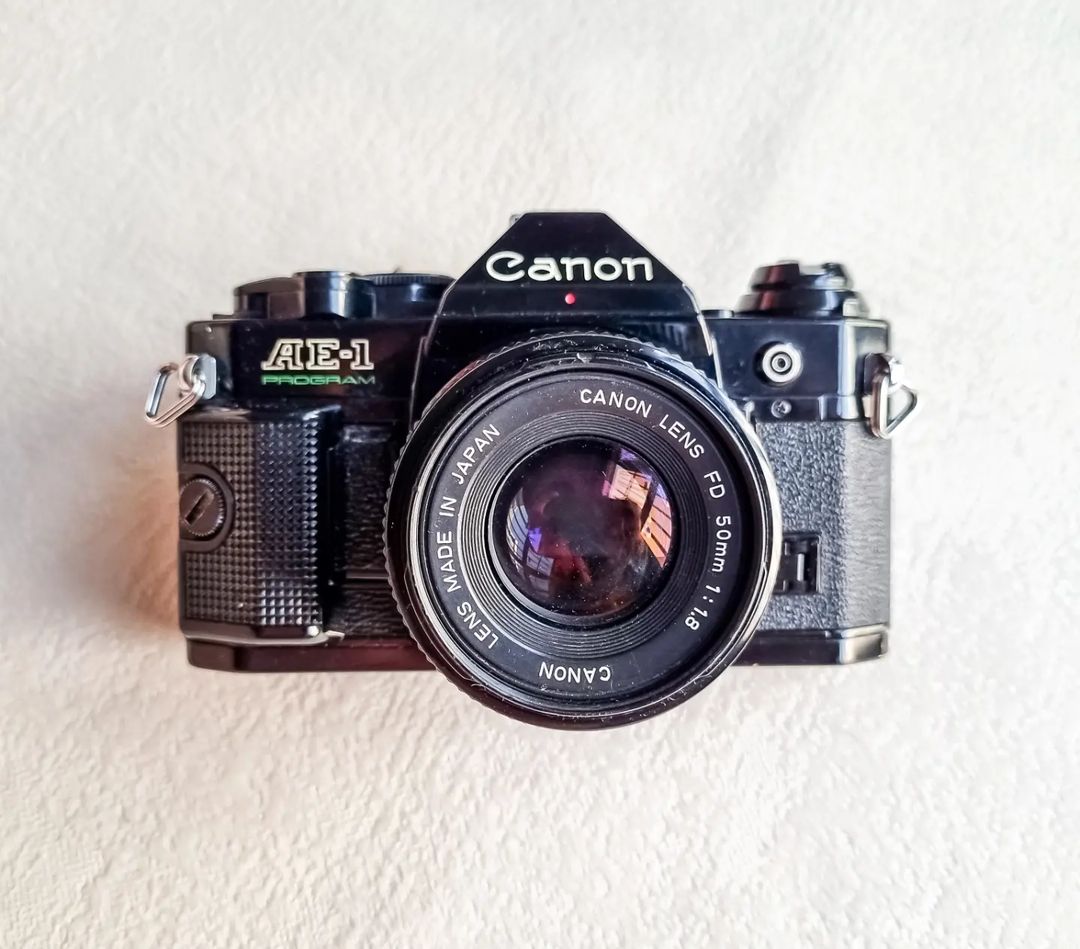
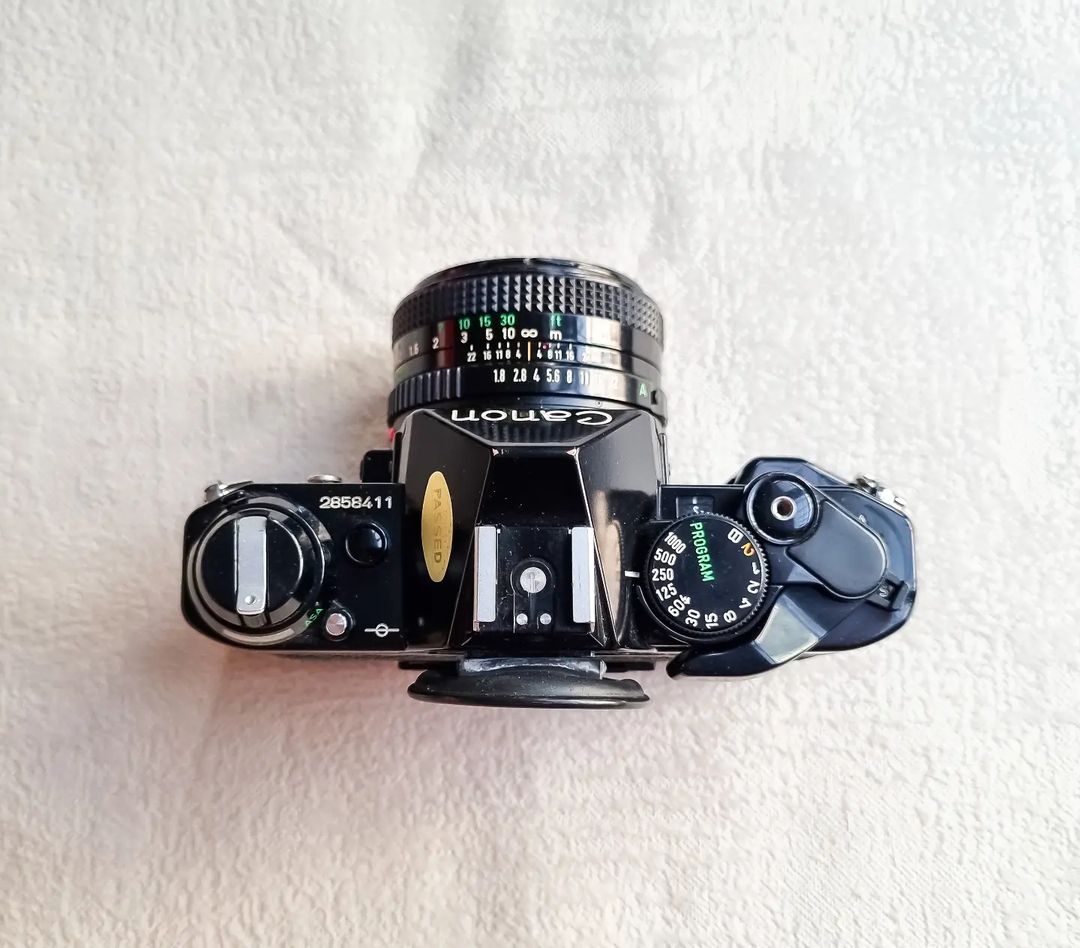


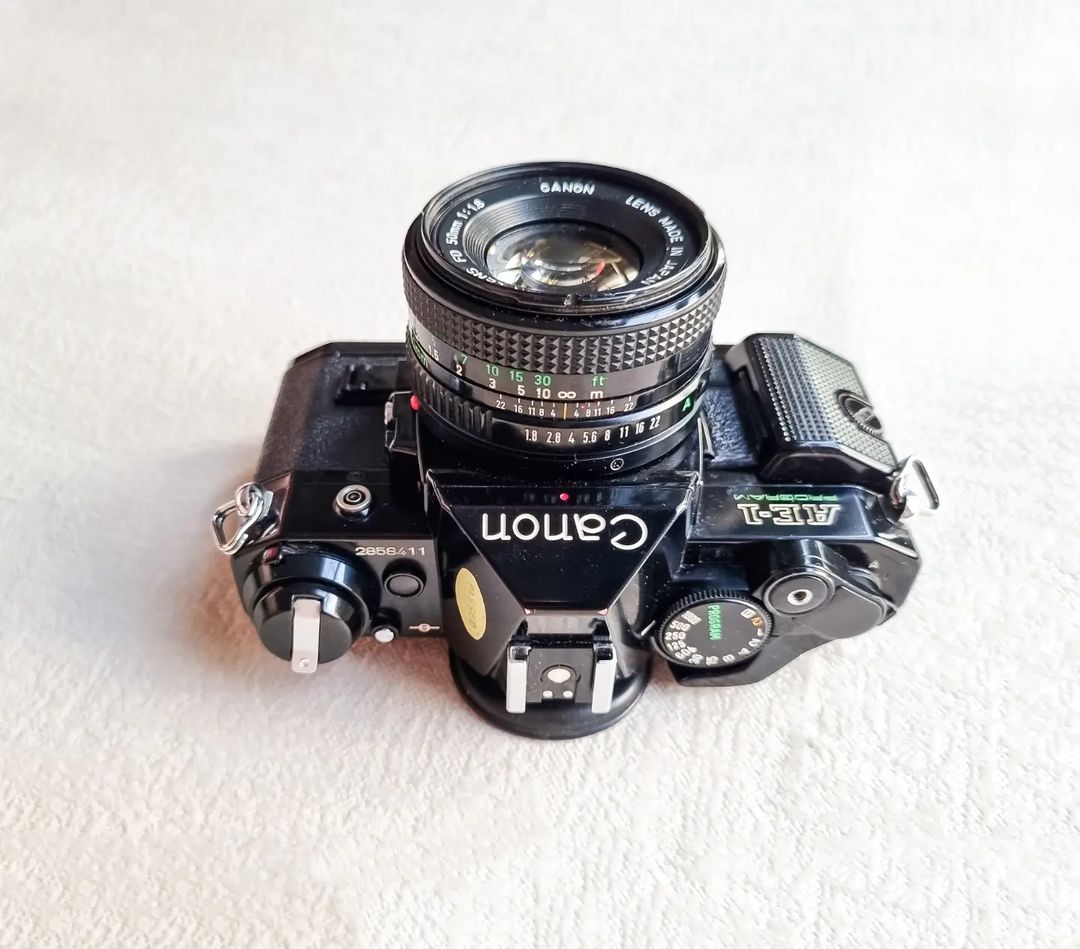
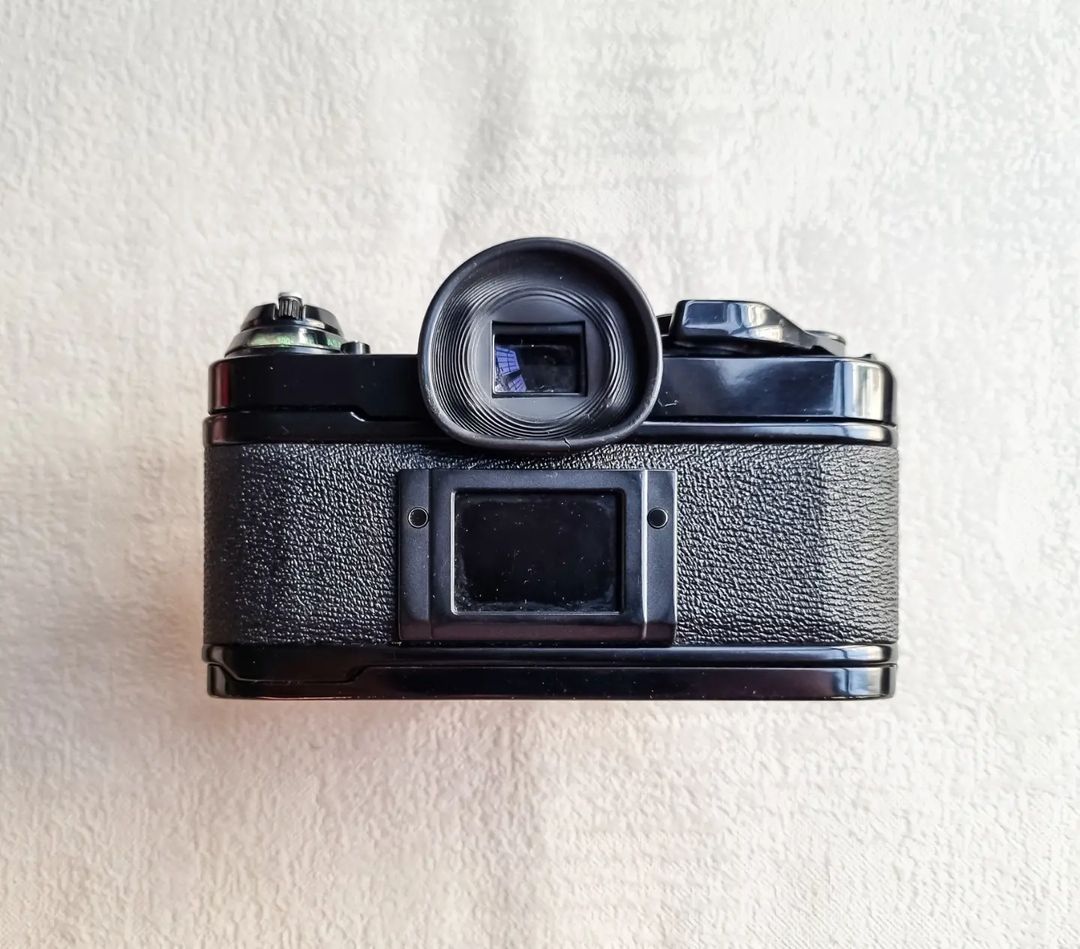
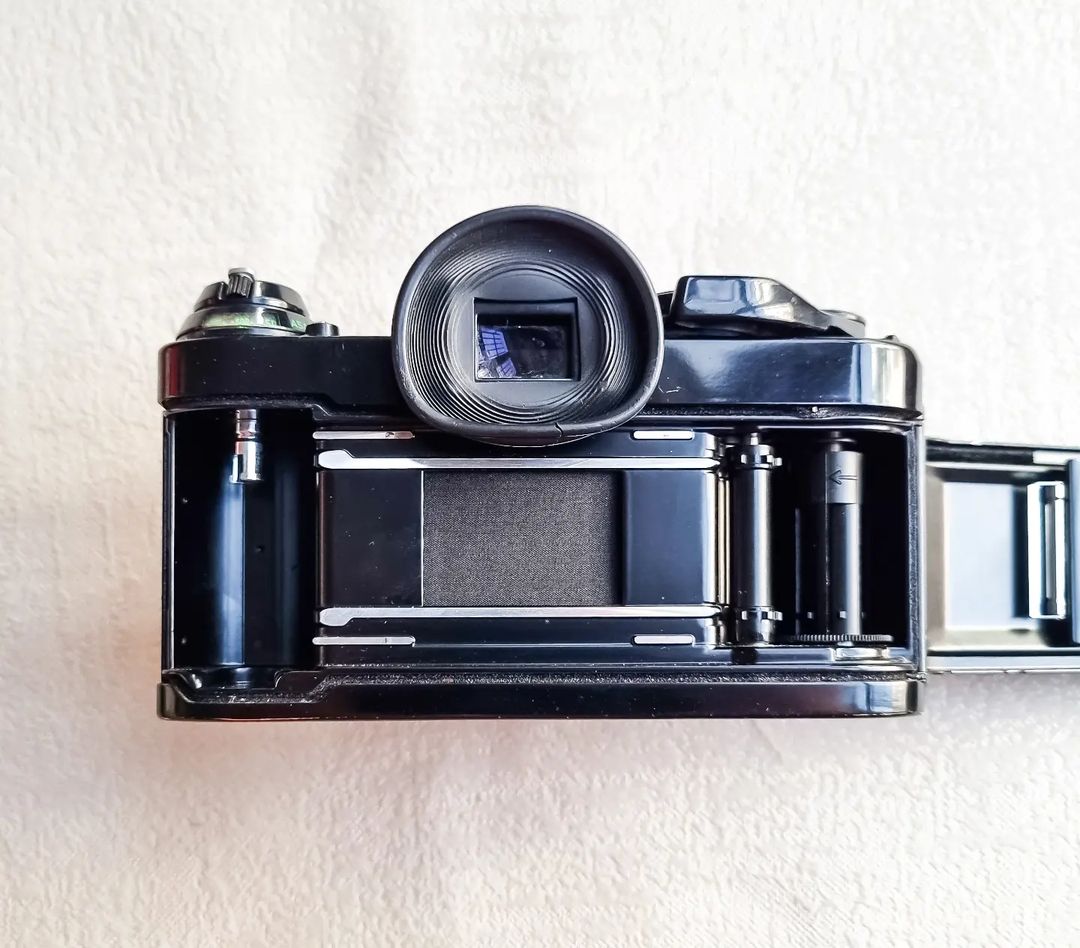
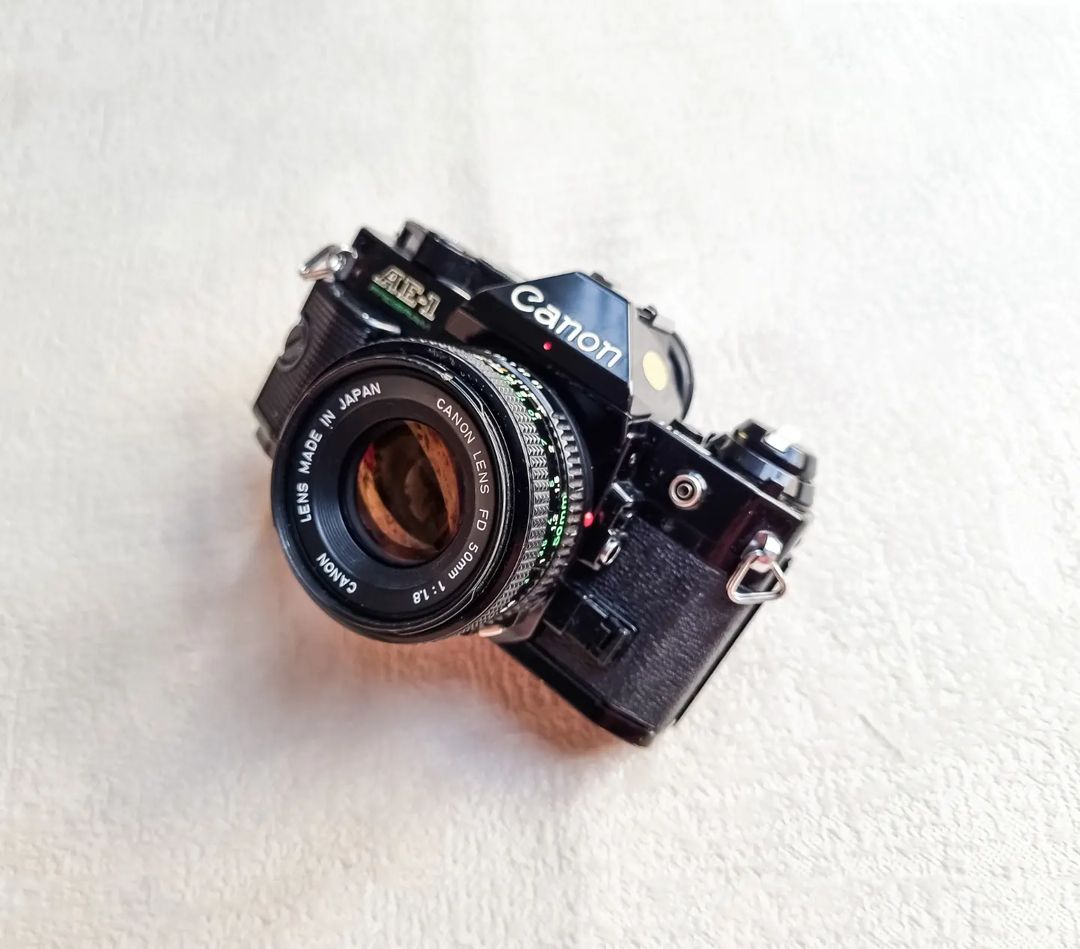
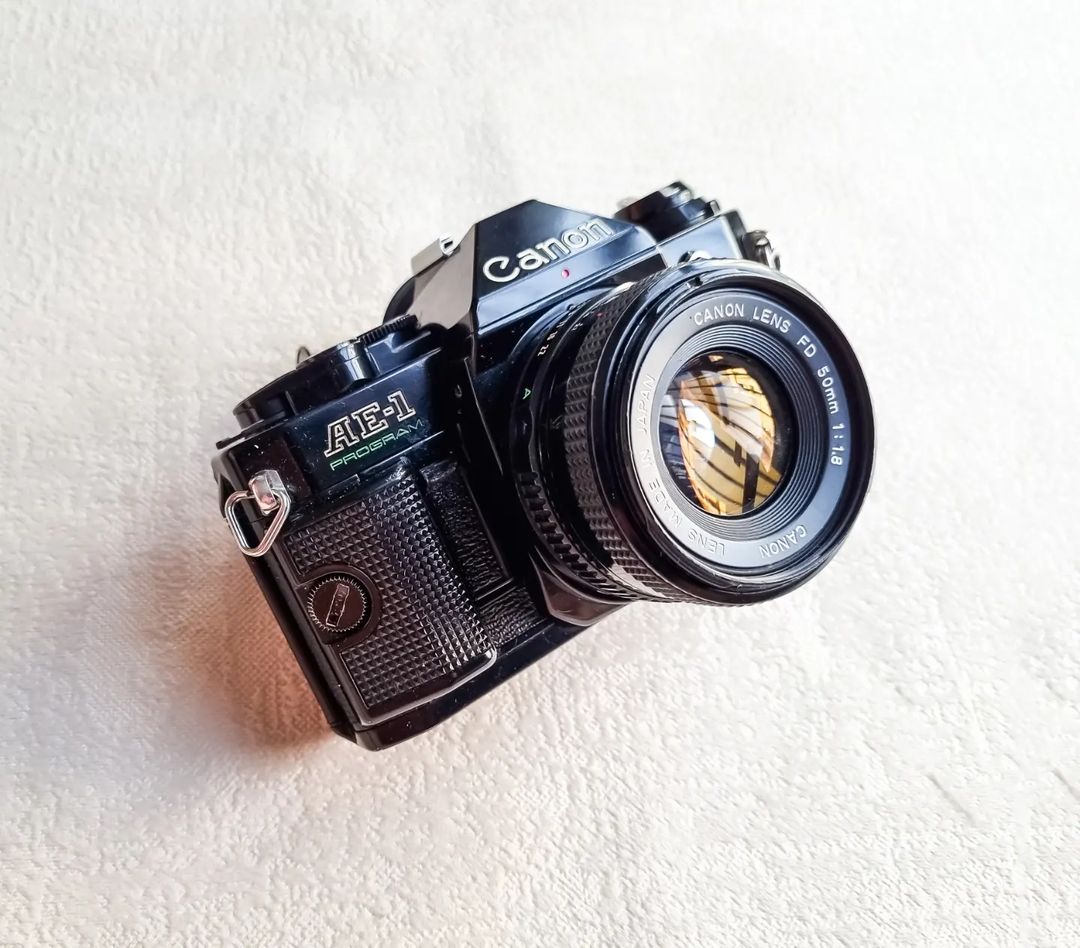
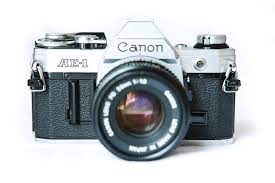

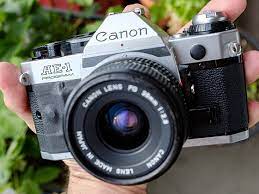
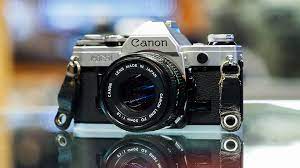
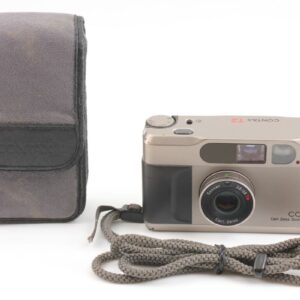
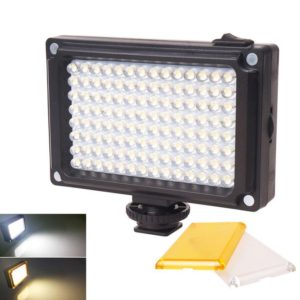
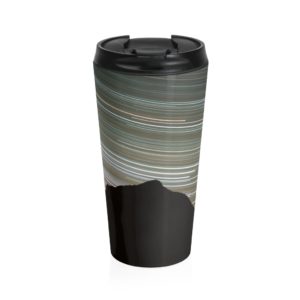

Reviews
There are no reviews yet.